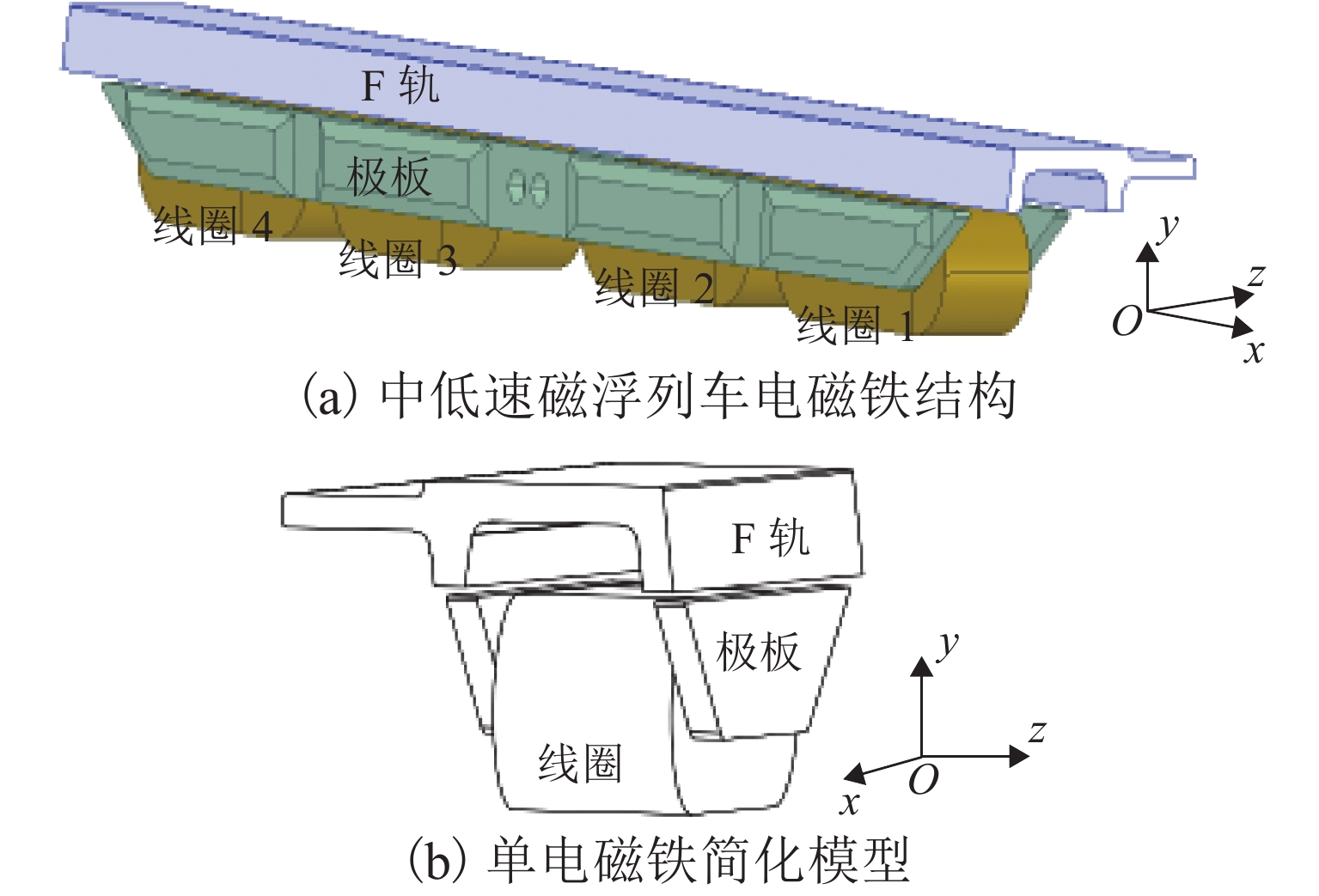Influence of Speed on Levitation Force of Medium−Low-Speed Maglev Train
-
摘要:
电磁铁为中低速磁浮列车提供悬浮力,其与轨道发生相对运动时,在轨道上产生涡流,同时,轨道涡流产生的外加磁场抵消了部分电磁铁产生的原磁场,进而使得电磁铁提供的悬浮力下降. 为此,首先分析轨道涡流的形成规律,以及列车不同速度时涡流对气隙磁场的影响,进一步研究了列车速度对悬浮力的影响;其次,采用叠片F轨的方法来抑制涡流效应,结合叠片F轨提升悬浮力的机理,分析F轨不同叠片层数结构下轨道涡流对悬浮力的影响;最后,以长沙磁浮快线电磁铁结构为例,使用有限元软件进行仿真分析. 结果表明:使用叠片F轨后可以降低轨道中的涡流,随着叠片数量的增加,气隙磁场逐渐逼近静态条件下的气隙磁场;悬浮电磁铁模块的端部线圈以120 km/h的速度运动时,得到轨道为无叠片F轨时悬浮力为5.7 kN,轨道为两层叠片F轨时悬浮力为7.5 kN,相比较无叠片F轨悬浮力增长30%.
Abstract:Electromagnet provides suspension force for medium−low-speed maglev train. When the electromagnet moves relatively to a rail, eddy current is generated on the rail. The external magnetic field generated by the track eddy current offsets part of the original magnetic field generated by the electromagnet, causing the decrease of the suspension force provided by the electromagnet. Firstly, the formation of rail eddy current and its effects on air gap magnetic field are analyzed at different vehicle speeds. The influence of train speeds on the suspension force is further studied. Secondly, the laminated F-rail is used to suppress eddy current effect. Combined with the mechanism of the laminated F-rail lifting suspension force, the influence of rail eddy current on the suspension force is analyzed with the F-rails of different laminated layers. Finally, the electromagnet structure of Changsha Maglev Fast Line is simulated by using finite element software. The results show that the laminated F-rail can reduce the rail eddy current, and the air gap magnetic field gradually approaches the one under static conditions. When the coil at the end of the electromagnet model moves at the speed of 120 km/h, the suspension force is 5.7 kN without the non-laminated F-rail and 7.5 kN with the laminated F-rail of two layers, increasing by 30% compared with the case of the non-laminated F-rail.
-
Key words:
- magnetic levitation vehicle /
- electromagnet /
- electromagnetic force /
- eddy current
-
中低速磁浮列车是一种有广泛应用前景的新型城市轨道交通工具[1]. 磁浮列车悬浮于轨道上,不与轨道接触,具有安全可靠、线路适应性强、安静舒适和环境友好的特点[2-4]. 目前,中低速常导磁浮列车的悬浮力是通过电磁铁与F型钢轨间的吸力来实现的[5]. 由于电磁铁和F型钢轨都是实心金属,当电磁铁线圈通电以后,会在F型钢轨中产生涡流,涡流会起到削弱悬浮力的作用[6],速度越大,产生的涡流越大,削弱悬浮力的效应越大[7]. 尤其是在电磁铁的端部,涡流效应最为明显. 例如在长沙磁浮快线上运营的磁浮列车,通过实际数据监测可知:当列车速度达到80 km/h以上时,由于电磁铁的端部涡流效应,使列车端头的电磁铁悬浮力削弱比较明显,当车速达到100 km/h时,列车端头电磁铁悬浮力损失达20%左右. 为保证稳定悬浮,悬浮控制系统会给电磁铁提供更大的电流以保证足够的悬浮力,而电磁铁电流加大的后果是电磁铁发热加剧、寿命缩短. 故随着车速提高,钢轨涡流效应大大削弱列车悬浮力成为限制列车提速的瓶颈问题.
国内有不少学者研究了中低速磁浮列车悬浮电磁铁的特性. 罗芳等[8]对常导悬浮电磁铁的电磁场进行了分析,杨志华[9]对电磁铁做了优化设计工况下的悬浮力特性,但没有考虑轨道涡流对悬浮力的影响. 德国和日本的学者较早关注这个问题. Borcherts等[10]设计了小型的轨道和电磁铁实验装置,通过观察电流变化分析电流幅度和悬阻比与电磁铁长度的关系. Du等[11]以HSST (high speed surface transport)为研究对象,对F轨涡流进行了数值计算,指出由于F轨产生的涡流,气隙磁通密度随着电磁铁速度的增加而减小,特别是端部电磁铁的减小最明显. 上述研究分析了钢轨涡流对于电磁铁气隙磁场的影响,以及随之带来的电磁铁悬浮力的变化. 为解决列车高速运行时悬浮力衰减的问题,郑丽莉等[12]提出了在电磁铁的端部增加一个永磁体,或在端部增加一个电磁体线圈,这两种方法可有效增加悬浮力,但同时使悬浮控制系统的结构复杂化,并增加了列车高速运行时悬浮稳定控制的难度.
为解决该问题,本文研究了叠片F型钢轨,即将F型钢轨改为由叠片构成的F型钢轨的方法,使用解析解和数值解两种方法验证可行性,并借助有限元软件对电磁铁模型进行三维瞬态磁场仿真,仿真结果表明叠片F型钢轨的方法可以大幅度降低轨道涡流对于悬浮力的影响. 为达到节约轨道成本的目的,本文分析比较了轨道不同层数条件下的悬浮力-速度特性,得出最优的轨道分层层数.
1. 电磁铁数学模型
1.1 静态磁场计算
现有中低速磁浮列车的一个电磁铁模块由2个极板和4个电磁铁线圈构成[13-14],如图1(a)所示,在静态磁场中4个电磁铁的磁场计算一致,为了简化计算,取其中只包含一个线圈的单电磁铁进行计算,单电磁铁模型可以简化成图1(b)所示模型.
在计算时作如下假设:电磁铁与轨道没有相对运动且悬浮间隙稳定,忽略绕组线圈的漏磁通,铁芯导磁率远大于空气,且不考虑其饱和特性.
可以得到静态条件下电磁铁气隙磁密B0与电磁力F0的解析式[15]为
B0=μ0Ni2g, (1) F0=μ0SN2i24g2, (2) 式中:μ0为真空磁导率;S为电磁铁单侧极板与悬浮间隙正对的磁极面积;N为电磁铁线圈匝数;i为线圈励磁电流;g为悬浮间隙.
1.2 动态磁场计算
假设电磁铁运动方向为x轴方向,气隙磁场磁通密度方向与y轴平行,在F轨上将产生xOz平面环绕的涡流,涡流分析实际上为xOz平面二维问题,此涡流会改变电磁铁气隙磁场的大小.
根据麦克斯韦方程组可以得到
J=σ(E+v×B), (3) ∇×E=0, (4) J=∇×Bμ, (5) 式中:J为电流密度;σ为电导率;E为电场强度;B为磁通密度;μ为磁导率;v为速度.
令B=(0,b(x,z),0),其中b(x,z)是xOz平面的磁通密度,由式(5)得
J=1μ∇×B=1μ(−∂b∂zex+∂b∂xez), (6) 式中:ex、ez分别为电流密度J在x轴和z轴方向上分量的单位向量.
设电磁铁极板长度为L,铁芯长度为l,令l=L,厚度为2a,轨道厚度为2a,单侧高度为d,如图2所示,在电磁铁xOy截面上取矩形积分路径1,yOz截面上取矩形积分路径2,积分路径需包括整个轨道厚度(轨道上有感应电流).
使用安培环路定理对积分路径1和2求解涡流密度,分别得到:
Jx=−gμ0d∂b∂z, (7) Jz=gμ0d∂b∂x. (8) 由式(3)和式(4)得到
∇×J=σ∇×(v×B). (9) v方向与x轴方向相同,令v=(v,0,0),由式(6)~式(9)得到
∂2b∂x2+∂2b∂z2−K∂b∂x=0, (10) 式中:K=σμ0dv/g.
磁通密度b包括激励分量be和轨道感应涡流产生的分量bi:
b=be+bi. (11) 假设be只在电磁铁极板和轨道正对的气隙中,为恒定值B0,即
be=B0[u(z+a)−u(z−a)],0<x<L, (12) 式中:u(z)为阶跃函数.
由式(10)、(11)可以得到
∂2bi∂x2+∂2bi∂z2−K∂bi∂x=0. (13) 式(12)、(13)求解得到[12]
b(x,z)={∞∑r=1[CrB0+Xr(x)]cos(λrz),0⩽ (14) 式中:{C_r} = \dfrac{2}{{a{\lambda _r}}}\sin \left( {a{\lambda _r}} \right)\text{;}{\lambda _r} = \dfrac{{\left( {2r - 1} \right){\text{π}} }}{{2a}} ;
\begin{split} &{X}_{r}(x) = \left\{ \begin{array}{l}{C}_{r}{B}_{0}\dfrac{{\alpha }_{r}}{{\alpha }_{r}-{\beta }_{r}}\left({{\rm{e}}}^{-{\beta }_{r}x}-{{\rm{e}}}^{-{\beta }_{r}(x-L)}\right),\;\; x < 0\text{,}\\ {C}_{r}{B}_{0}\dfrac{1}{{\alpha }_{r}-{\beta }_{r}}\left({\beta }_{r}{{\rm{e}}}^{-{\alpha }_{r}x} - {\alpha }_{r}{{\rm{e}}}^{-{\beta }_{r}(x-L)}\right),\;\; 0\leqslant x < L\text{,}\\ {C}_{r}{B}_{0}\dfrac{{\beta }_{r}}{{\alpha }_{r}-{\beta }_{r}}\left({{\rm{e}}}^{-{\alpha }_{r}x}-{{\rm{e}}}^{-{\alpha }_{r}}{}^{(x-L)}\right),\;\; x\geqslant L; \end{array} \right.\\ &{\alpha _r} = \left( { - K + \sqrt {{K^2} + 4\lambda _r^2} } \right)/2\text{;} {\beta _r} = \left( { - K - \sqrt {{K^2} + 4\lambda _r^2} } \right)/2. \end{split} 根据式(14),计算悬浮力为
\begin{array}{*{20}{c}} {{F_y} = \dfrac{1}{{{\mu _0}}}\displaystyle\int_{ - \infty }^\infty {{\rm{d}}x\displaystyle\int_{ - a}^a {{{ {b^2(x,{\textit{z}})} }}{\rm{d}}{\textit{z}}} } = } {{F_{y,0}}\mathop {\displaystyle\sum\limits_{r = 1}^\infty {C_r^2f(r)} }\nolimits_{} }, \end{array} (15) 式中:Fy,0为静态条件下的悬浮力;
\begin{aligned} &f(r) =\frac{1}{2 L}\left[{ L} + \frac{2 \alpha_{r} \beta_{r}-\beta_{r}^{2}}{\alpha_{r}\left(\alpha_{r}-\beta_{r}\right)^{2}}\left(1-{\rm{e}}^{-\alpha_r L}\right) +\right. \\ &\quad \frac{\alpha_{r}^{2}-2 \alpha_{r} \beta_{r}}{\beta_{r}\left(\alpha_{r}-\beta_{r}\right)^{2}} \left(1-{\rm{e}}^{\beta_r L}\right) + \\ &\left.\frac{2 \alpha_{r} \beta_{r}}{\left(\alpha_{r} + \beta_{r}\right)\left(\alpha_{r}-\beta_{r}\right)^{2}}\left({\rm{e}}^{-\alpha_r L}-{\rm{e}}^{\beta_r L}\right)\right]. \end{aligned} 1.3 叠片F轨解析计算
F型钢轨由4层叠片构成时如图3所示,可以等效看成4个F轨共同作用. F型钢轨由n层叠片构成时可以等效看成n个单层F轨共同作用,n层叠片F轨由内到外对应单侧高度分别为 d_{1} 、 d_{2} 、…、 d_{n} ,每层叠片极板厚度为原来极板厚度的1/n,其中第 j 层的高度为
{d}_{j}={d}_{0} + ({d}_{n}-{d}_{0})j\text{/}n\text{,}\quad j=1,2,\cdots ,n. (16) 此时,{\lambda _r} = {{(2r - 1){\text{π}} } / {(2an)}},代入式(15)、(16),可以得到关于n层叠片F轨中每层叠片的气隙磁场磁通密度与悬浮力.
2. 气隙磁场及悬浮力速度特性分析
以长沙磁浮快线的悬浮电磁铁结构为例,将列车运行方向的端头电磁铁的端头线圈作为研究对象,电磁铁主要参数如表1所示.
表 1 电磁铁主要参数Table 1. Main parameters of electromagnet参数 取值 极板、轨道厚度/mm 28 铁芯长度/mm 400 极板长度/mm 2 720 线圈匝数/匝 360 线圈电流/A 35 气隙/mm 10 第1节的计算中,铁芯长度和极板长度相等. 由于在电磁铁极板长度一定的条件下,电磁铁吸力与铁芯长度成正比关系. 因此,对气隙磁密和悬浮力的计算式中引入修正系数k,令k=l/L. 修正后的气隙磁密和悬浮力分别为
\hat b(x,{\textit{z}}) = {k^{1{\text{/}}2}}b(x,{\textit{z}}), (17) \hat F_y^{} = k{F_y}. (18) 使用数学软件求解式(17)、(18),得到单个电磁铁线圈在不同情况下的气隙磁密和悬浮力比值变化.
电磁铁气隙磁通密度如图4所示. 图4(a)表明轨道涡流减弱了电磁铁和轨道中间气隙磁场的入端磁通密度,而在出端有拖尾场的产生,随着速度的增加,气隙磁场朝着电磁铁出端方向移动,电磁铁入端磁场减小,出端磁场增大. 图4(b)表明使用叠片F轨替换无叠片F轨后,可以大幅度降低轨道中的涡流,随着叠片数量的增加,降低轨道涡流的效果越好,气隙磁场逐渐逼近静态条件下的气隙磁场.
图5为电磁铁运动时的悬浮力 {F_y} 相对静态时的悬浮力 {F_{y,0}} 的比值变化.
{F_y}/{F_{y,0}} 与v基本呈现线性关系,且随着v的增加而降低. 当n=1层时,即在无叠片F轨的情况下,悬浮力比值随着v增加而降低的程度远大于叠片F轨的情况,当v = 120 km/h时,无叠片F轨的悬浮力降低为静态条件下的77.6%,而两层与三层叠片F轨的悬浮力分别为静态条件下的94.0%和97.0%.
{F_y}/{F_{y,0}} 随着n值的增大而增大. 当n≥2层时,速度v从40 km/h变到120 km/h,悬浮力比值变化幅度低于3%;当n值增大到一定的数值后,轨道涡流对于悬浮力的影响已经不再随着速度的增加而大幅度增加. 由此可见,为使悬浮力不受轨道涡流影响,且在不增加轨道复杂度和成本的基础上,F轨选用两层叠片即可.
3. 列车速度对悬浮力影响有限元仿真分析
根据上文分析可知,叠片F轨取n=2层便可使涡流大幅度降低,现仅将无叠片F轨(n=1层)和叠片F轨(n=2层)两种情况进行仿真对比分析. 在有限元软件上搭建无叠片和两层叠片F轨电磁铁模型,电磁铁结构仍以长沙磁浮快线电磁铁为例. 为便于观察电磁铁与气隙中的磁通密度与轨道涡流情况,取两条参考线,参考线1在钢轨内,与x轴平行,并且处于轨道磁极下表面上方1 mm处,参考线2在气隙中部,与x轴平行,如图6所示.
3.1 单电磁铁F轨涡流效应仿真分析
以长沙磁浮快线电磁铁只含单个线圈的尺寸参数搭建有限元模型,得到F轨xOz平面的涡流密度J的云图如图7所示.
轨道涡流主要集中在与电磁铁正对的F轨处,在电磁铁出端后有较长的拖尾,整体呈现F轨两侧高中间低的特点,随着速度的增加F轨xOz平面上涡流密度增加,当速度相同,而叠片数量增加时,其分布特点基本不变,涡流密度降低.
参考线1上的涡流密度如图8所示.
使用无叠片F轨时,轨道涡流随着速度的增加而增加,轨道涡流的位置集中在与电磁铁两端位置相对应的F轨处;在电磁铁入端处,轨道涡流峰值在电磁铁入端位置前,在电磁铁出端,轨道涡流峰值在电磁铁出端位置上. 使用两层叠片F轨时,轨道涡流的峰值低于使用无叠片F轨的情况,在电磁铁入端与出端处,轨道涡流峰值都在电磁铁位置上.
3.2 单电磁铁气隙磁场仿真分析
参考线2上的磁通密度如图9所示.
由图9可知:在使用无叠片F轨的情况下,随着速度的增加,由于轨道涡流的影响,电磁铁气隙磁场的磁通密度大幅度降低;在使用两层叠片F轨,相同速度的情况下,电磁铁气隙磁场的磁通密度相比于无叠片F轨时有很大的提升,已经接近于静态条件下电磁铁的气隙磁通密度. 图9的仿真结果与解析计算结果趋势一致.
3.3 电磁铁模块悬浮力仿真分析
以长沙磁浮快线包含4个线圈的完整电磁铁模块搭建有限元模型,仿真得到电磁铁模块悬浮力如图10所示,其中列车运行方向为从线圈4到线圈1的方向,即x轴方向,运行速度为120 km/h.
图10表明:电磁铁模块中线圈1对应的电磁铁受到轨道涡流影响最大;在无叠片F轨的情况下线圈1对应的电磁铁悬浮力稳定值在5.7 kN,线圈2对应的电磁铁悬浮力稳定在6.9 kN;在两层叠片F轨的情况下线圈1对应电磁铁悬浮力稳定值在7.5 kN,相比较无叠片F轨其悬浮力增长30%,线圈2对应电磁铁悬浮力稳定在8.0 kN,相比较无叠片F轨其悬浮力增长15%. 由于线圈3、4对应电磁铁受轨道涡流的影响很小,悬浮力增长幅度较小.
4. 结 论
1) 悬浮电磁铁运动时在钢轨中产生涡流,涡流会削弱悬浮力,速度越大,产生的涡流越大,削弱悬浮力的效应越大,在电磁铁的端部,涡流效应最为明显. 当速度为120 km/h时,无叠片F轨的悬浮力降低为静态条件下的77.6%.
2) 理论分析结果表明:叠片数为2层时轨道涡流对悬浮力影响已经很弱,两层叠片F轨的悬浮力为静态条件下的94.0%. 用有限元仿真软件对轨道涡流效应和速度的关系进行验证,同时对轨道涡流效应对悬浮力的影响进行验证,仿真结果表明:当列车在中低速度情况下运行时,在小幅度增加轨道复杂度及造价成本的情况下,采用两层叠片F型钢轨的方法可以大幅度降低轨道涡流对于悬浮力的影响,满足列车运动时对于电磁铁悬浮力的要求,从根本上抑制了轨道涡流.
-
表 1 电磁铁主要参数
Table 1. Main parameters of electromagnet
参数 取值 极板、轨道厚度/mm 28 铁芯长度/mm 400 极板长度/mm 2 720 线圈匝数/匝 360 线圈电流/A 35 气隙/mm 10 -
[1] 钱清泉, 高仕斌. 中低速磁浮交通发展战略研究[M]. 成都: 西南交通大学出版社, 2019. [2] PRASAD N, JAIN S, GUPTA S. Electrical components of maglev systems: emerging trends[J]. Urban Rail Transit, 2019, 5(2): 67-79. doi: 10.1007/s40864-019-0104-1 [3] GOU J S. Development status and global competition trends analysis of maglev transportation technology based on patent data[J]. Urban Rail Transit, 2018, 4(3): 117-129. doi: 10.1007/s40864-018-0087-3 [4] DONG F L, HUANG Z, LI X F, et al. R&D of no-insulation HTS magnets using 2G wires in a prototype for maglev applications[J]. IEEE Transactions on Applied Superconductivity, 2019, 29(5): 1-5. [5] 曾国保. 中低速磁浮交通的适应性及工程化发展方向[J]. 铁道工程学报,2016,33(10): 111-115. doi: 10.3969/j.issn.1006-2106.2016.10.023ZENG Guobao. The adaptability and the improvement in engineering of the lower-medium speed maglev transit system[J]. Journal of Railway Engineering Society, 2016, 33(10): 111-115. doi: 10.3969/j.issn.1006-2106.2016.10.023 [6] YAMAMURA S, ITO T. Analysis of speed characteristics of attracting magnet for magnetic levitation of vehicles[J]. IEEE Transactions on Magnetics, 1975, 11(5): 1504-1507. [7] LI G C, JIA Z, HE G, et al. Analysis of eddy current induced in track on medium-low speed maglev train[J]. IOP Conference Series: Earth and Environmental Science, 2017, 69(1): 012184.1-012184.10. [8] 罗芳,张昆仑. 常导磁悬浮车悬浮电磁铁的电磁场分析[J]. 机车电传动,2002(1): 27-28,34. doi: 10.3969/j.issn.1000-128X.2001.01.008LUO Fang, ZHANG Kunlun. Electromagnetic field analysis on suspension magnet of EMS maglev vehicle[J]. Electric Drive for Locomotive, 2002(1): 27-28,34. doi: 10.3969/j.issn.1000-128X.2001.01.008 [9] 杨志华. 中低速磁浮列车悬浮系统仿真研究[D]. 成都: 西南交通大学, 2014. [10] BORCHERTS R, DAVIS L. Lift and drag forces for the attractive electromagnetic suspension systems[J]. IEEE Transactions on Magnetics, 1974, 10(3): 425-428. doi: 10.1109/TMAG.1974.1058452 [11] DU J, OHSAKI H. Numerical analysis of eddy current in the EMS-maglev system[C]//Sixth International Conference on Electrical Machines and Systems. Beijing: IEEE, 2003: 761-764. [12] 郑丽莉,李杰,李金辉. 钢轨涡流对磁浮列车悬浮电磁力影响的研究[J]. 计算机仿真,2011,28(8): 328-331,336. doi: 10.3969/j.issn.1006-9348.2011.08.080ZHENG Lili, LI Jie, LI Jinhui. Research on influence of eddy current induced in steel rails on levitation force of maglev[J]. Computer Simulation, 2011, 28(8): 328-331,336. doi: 10.3969/j.issn.1006-9348.2011.08.080 [13] ZHANG M, LUO S H, GAO C, et al. Research on the mechanism of a newly developed levitation frame with mid-set air spring[J]. Vehicle System Dynamics, 2018, 56(12): 1797-1816. doi: 10.1080/00423114.2018.1435892 [14] 梁潇,戴小冬,谭超,等. 既有长沙磁浮线路桥梁结构提速适用性研究[J]. 铁道科学与工程学报,2019,16(6): 1493-1498. doi: 10.19713/j.cnki.43-1423/u.2019.06.019LIANG Xiao, DAI Xiaodong, TAN Chao, et al. Study on the speed-increasing adaptation of the bridge structures in the existing maglev lines in Changsha[J]. Journal of Railway Science and Engineering, 2019, 16(6): 1493-1498. doi: 10.19713/j.cnki.43-1423/u.2019.06.019 [15] 詹佳雯. 中低速磁浮列车直线感应电机及悬浮电磁铁分析[D]. 杭州: 浙江大学, 2019. 期刊类型引用(2)
1. 赵园,何云风,郝宋,方亮,冯修军. 中低速磁悬浮列车端部电磁铁优化设计. 微特电机. 2024(12): 33-36 .  百度学术
百度学术2. 刘清辉,马卫华,单磊,罗世辉,刘静,秦龙泉. 基于试验数据的中低速磁浮列车电磁铁结构参数分析. 交通运输工程学报. 2023(06): 232-243 .  百度学术
百度学术其他类型引用(1)
-






 下载:
下载:










 下载:
下载:
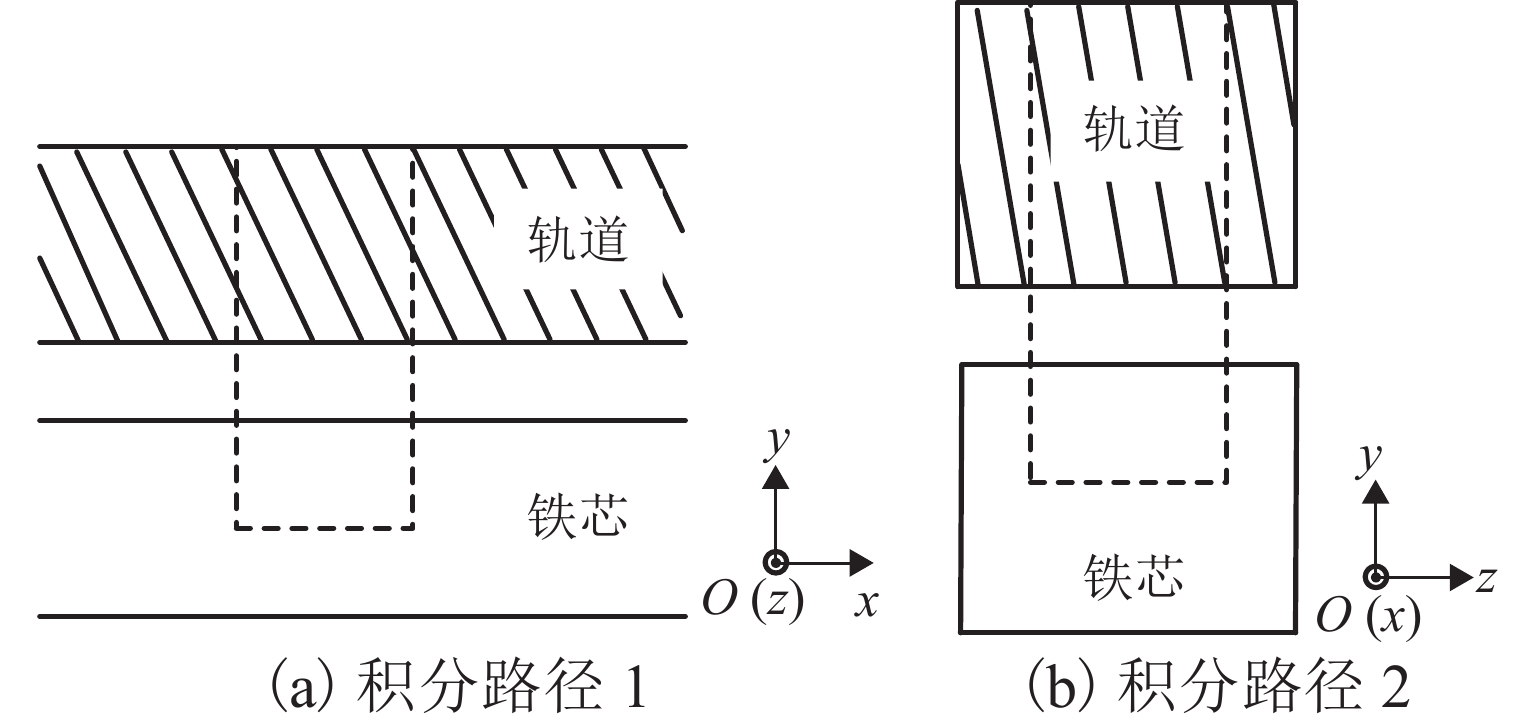

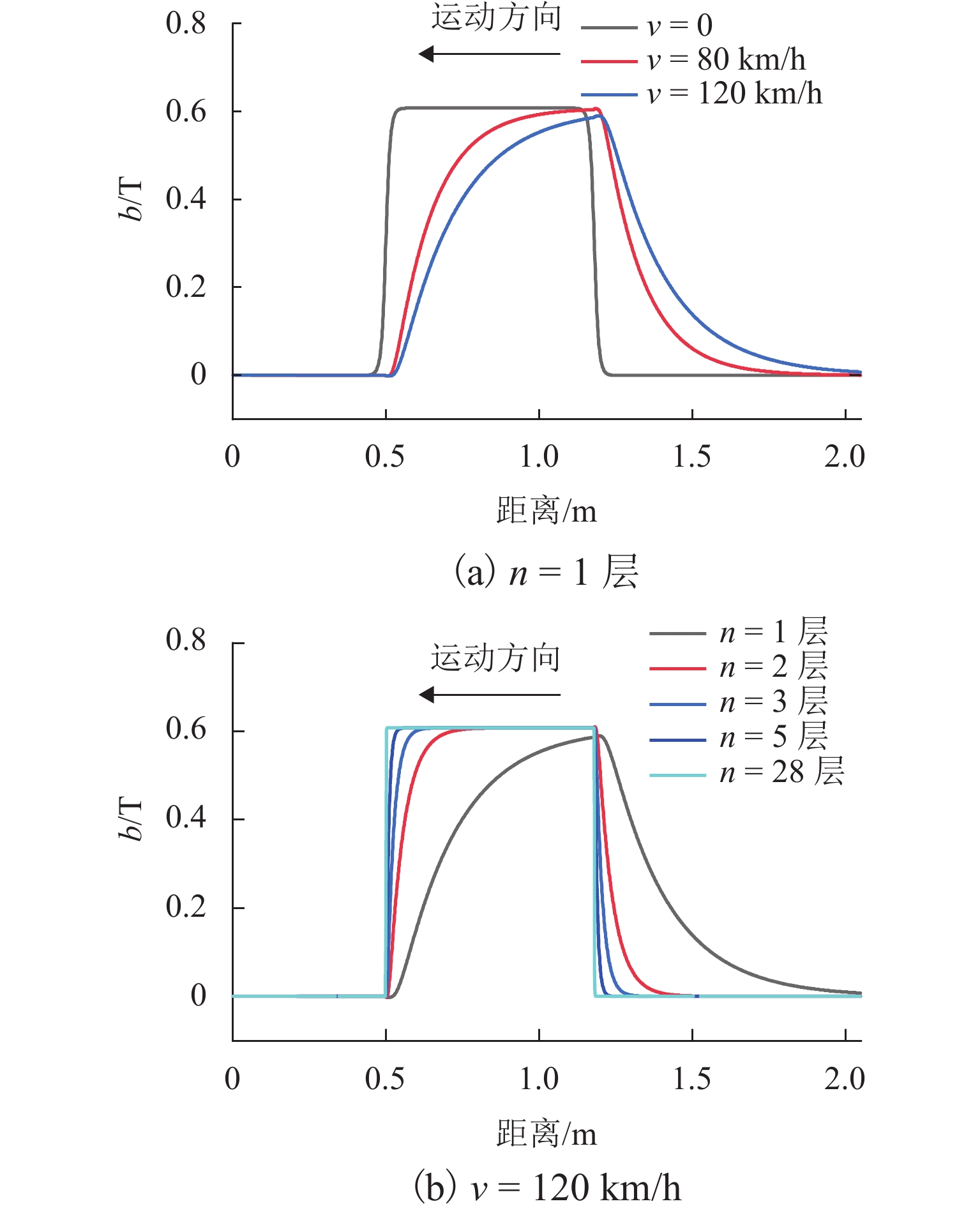



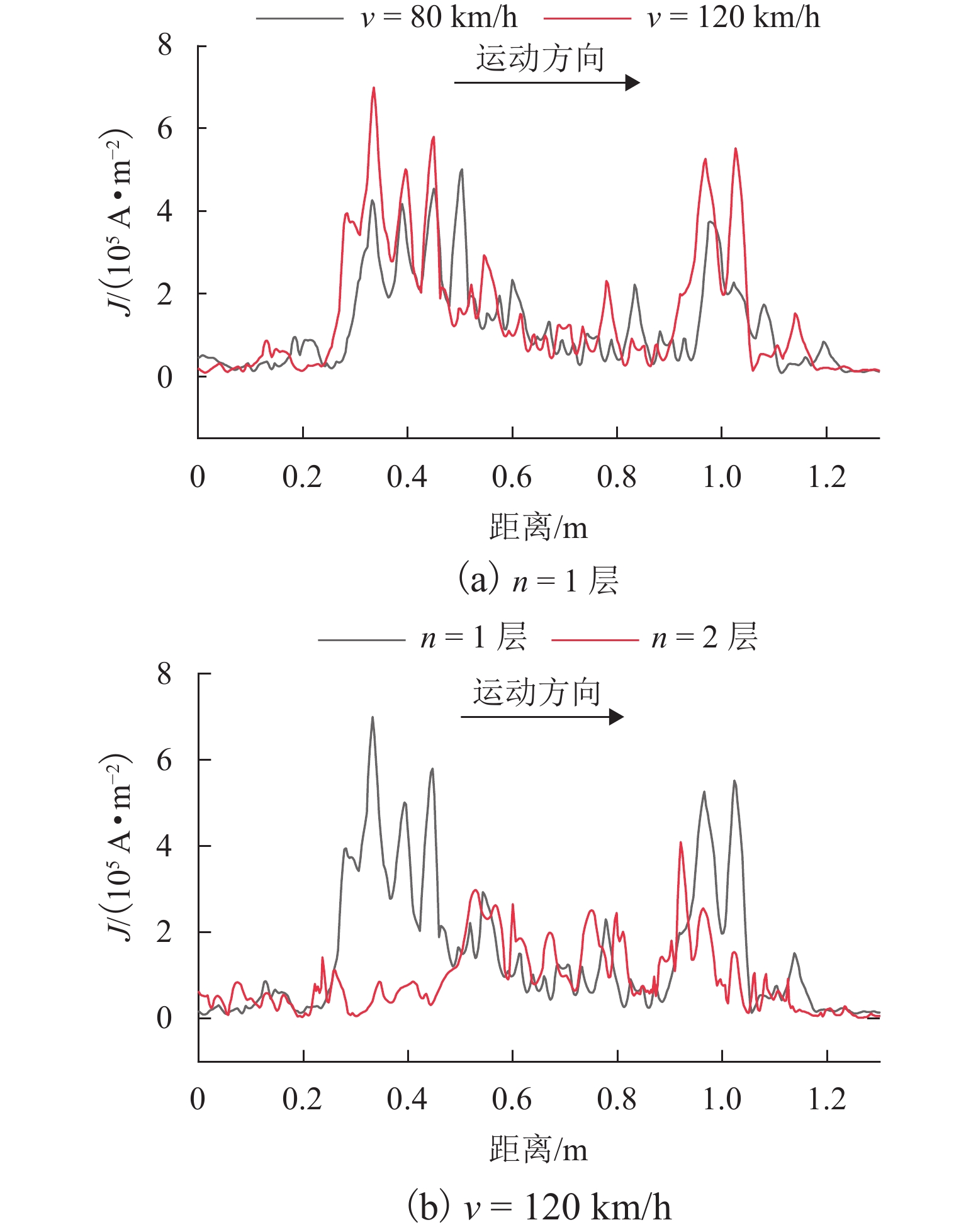
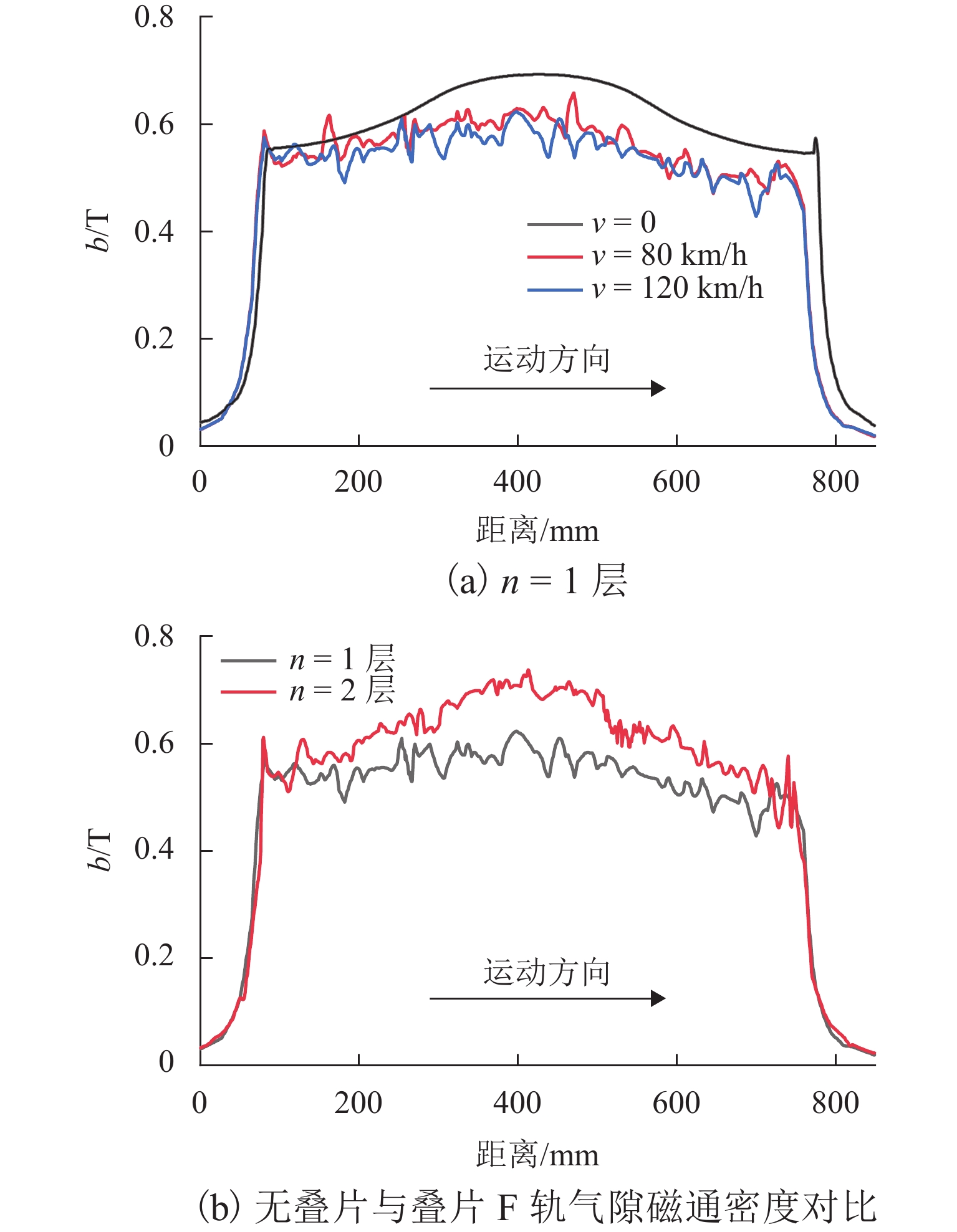
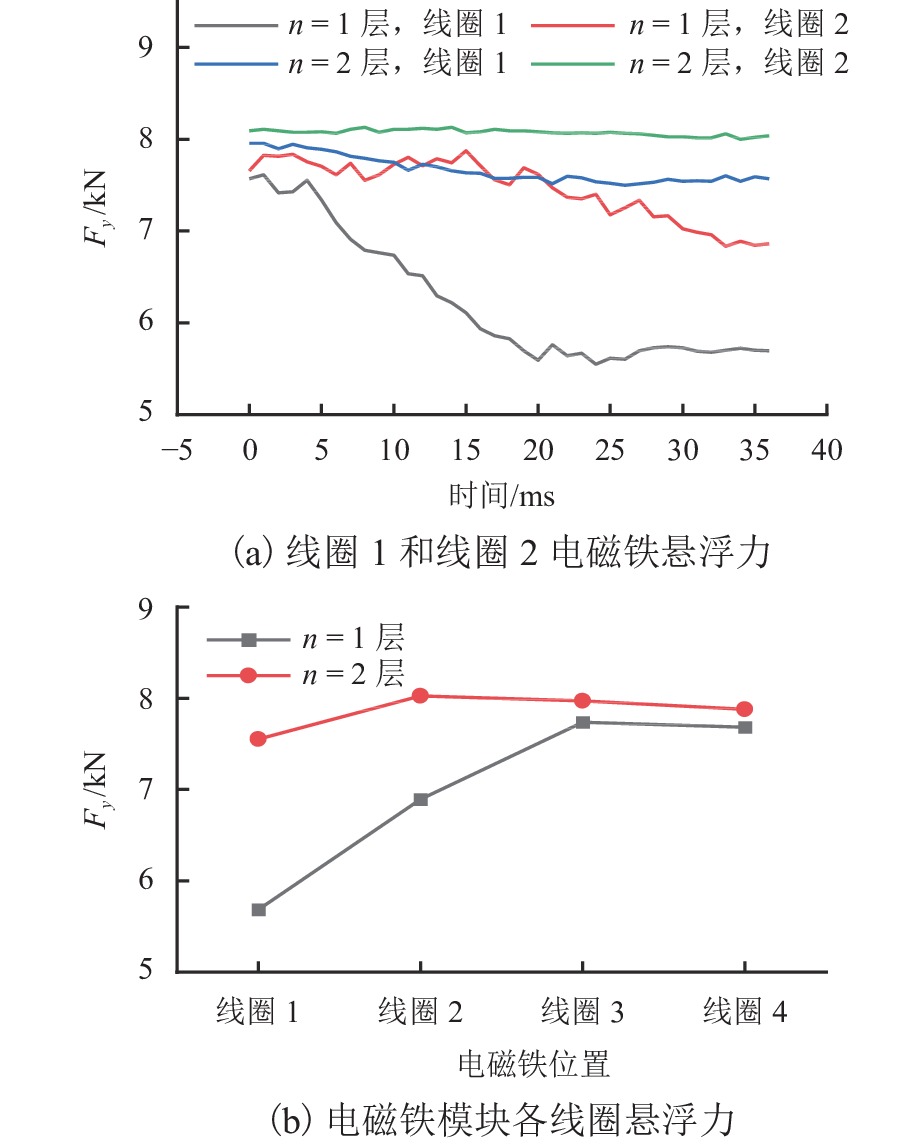
 百度学术
百度学术

